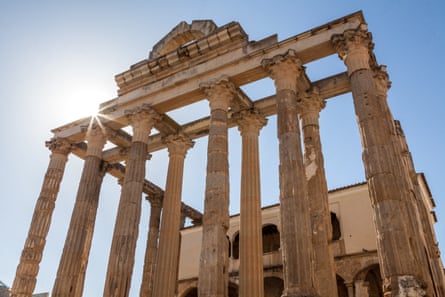
A musical treat in Budapest
The spectacular House of Music is in Budapest’s beautiful City Park. After going through the mushroom-like main entrance, you find a museum dedicated to the history of music. From the beginning of music to the modern day via Gregorian chanting and Hungarian folk, the House of Music is a fascinating place. With a superb audio guide, and for just 1,000 forints (£2.25), it is well worth a visit.
Danny Baker
Profile
Readers’ tips: send a tip for a chance to win a £200 voucher for a Coolstays break
Show
Guardian Travel readers’ tips
Every week we ask our readers for recommendations from their travels. A selection of tips will be featured online and may appear in print. To enter the latest competition visit the readers’ tips homepage
–
Antiquity in Mérida, Spain
At Mérida, the small friendly capital of Extremadura, I was stunned by the ancient monuments. The Roman amphitheatre, the theatre, the 755-metre long Puente Romano (Roman bridge) and the Moorish fort are brilliant – it’s amazing the town isn’t overrun by tourists. Everywhere is very walkable – stroll down quiet streets and come across the Temple of Diana or a portico or arch next to houses and shops. The gorgeous central Plaza de España, with its towering palm trees, is a great place to recharge.
Melinda Leftley
Literary West Yorkshire
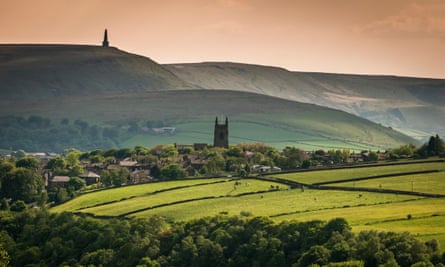
Basing ourselves in the delightful White Lion (doubles from £120 B&B) in Hebden Bridge, we devised a northern cultural tour. One highlight was our visit to locations from The Gallows Pole by Benjamin Myers about counterfeiters based around Cragg Vale. I read the book during our trip and also visited atmospheric Heptonstall – where Sylvia Plath is buried, and Hardcastle Craggs.
Penny
Three Erics in Morecambe
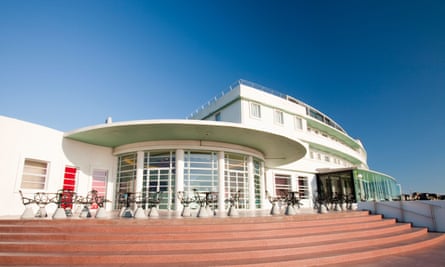
Culture? Morecambe. Lunch at the Midland hotel to appreciate the view and work by Eric Gill and Eric Ravilious. Stroll along the prom for a selfie with Eric Morecambe, the statue of the great TV cultural icon and son of the town. Back for coffee in the art deco cafe Brucciani and finally a performance by a band at the repurposed old railway station The Platform. Keep count of the street scenes you notice from the TV series The Bay (described by the Guardian as Broadchurch in Morecambe) along the way. Stay at the Broadwater guest house (doubles from about £130 for two nights, B&B), which has interesting 20th-century antiques.
Stephen Shaw
Art by the beach in Bournemouth
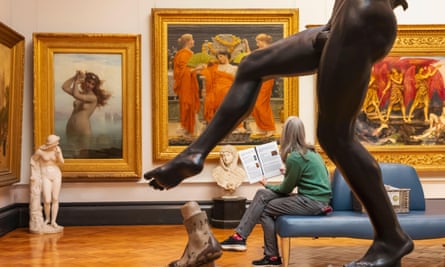
I stumbled on the The Russell-Cotes gallery in Bournemouth on a swelteringly hot day last summer – and what a treat it is, with its panoramic view of the sea, shady garden and intriguing art. Housed in a striking late Victorian art nouveau building, it has a great layout over two floors with elegant sculptures such as Pietro Calvi’s Othello, The Bathers by Edward Bowring Stephens and Giovani Benzoni’s Samuel, completed in 1859. Merton and Annie Russell-Cotes travelled the world in the late 19th century, so the collection is fairly eclectic geographically, including work from Sierra Leone and Congo. The ceiling is ornate and tiled art nouveau and the paintings include pre-Raphaelites, with works by Rossetti, such as Venus Verticordia, among others. In winter it has special “candlelight nights”.
Nigel Cox
Roman enchantment at Hadrian’s Wall
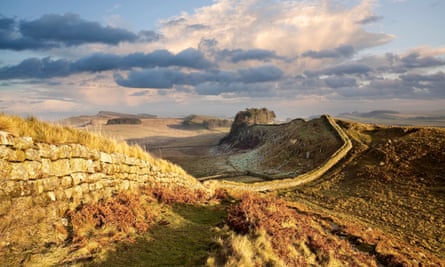
The site that really left me stunned this year was right here in the UK, visiting Hadrian’s Wall for the first time. I went to Sycamore Gap in June (I didn’t realise at the time how lucky I was to see the tree). I was excited to go there but I didn’t expect to feel so moved by a wall. It feels ancient, and holds such a strong identity, I put my hands on it and imagined the soldiers guarding it thousands of years ago. I visited the Great Wall in China a few years ago and Hadrian’s Wall is far smaller, with fewer visitors, but just as enchanting. It is rugged and you can climb and clamber around it, taking in its ancient legacy. A must-see.
Sarah Collings
after newsletter promotion
Fortress ruins in Catalonia
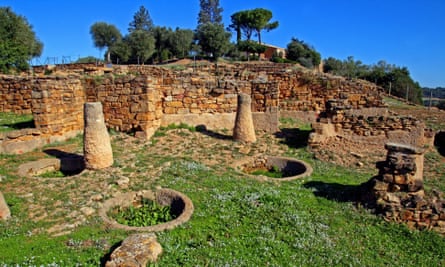
Away from the crowds of the Costa Brava near the village of Ullastret (10 miles inland) are the ruins of an ancient Iberian fortress, Ciutat ibèrica d’Ullastret, dating back to the 6th century BC. It’s great to visit with kids as the site is surrounded by a huge wall to capture the imagination. The site is on a hill overlooking the countryside. There is a small museum that includes a skull with a spike driven through the head. Adult admission is €7.
Bernard
The pull of science in Geneva

It may not be art but I found a visit to Cern, the particle physics research centre, overpowering. I spent two days being shown around the site, during which it was possible to see all its fascinating – and highly photogenic – equipment at close quarters. It is an extraordinary experience to see scientific research at the outer margins of knowledge actually being carried out. Entrance is free.
Norman Rimmell
Georgia’s ancient wine method
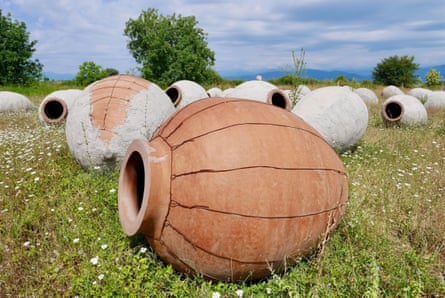
Georgia’s traditional and ancient qvevri wine-making method is Unesco-listed and after we’d become familiar with the ruby-red saperavi wine, master craftsman Zaza Kbilashvili, whose winery is in Telavi, eastern Georgia, demonstrated making the clay vessels. Clay is mixed with water and shaped by hand before being dried, coated with concrete and fired in an oven big enough to hold 10 huge 1,400 litre vessels. After being baked at 1,200C for a week, they’re lined with beeswax. The qvevri are then buried in the ground and whole grapes added and left to ferment naturally. Tour over, we sat surrounded by a sunken qvevri and tasted the wine. Amazing.
Roy Messenger
Winning tip: Karen Blixen and a trio of trains, Denmark
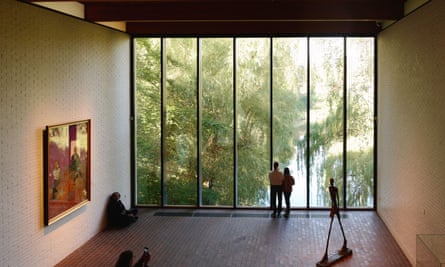
I had a cracking day out from Copenhagen using just one railway line. First stop, Hamlet’s Kronborg Castle at Helsingør (a 20-minute walk from the station) which was a fantastic history lesson, then back to Louisiana Museum of Modern Art (a short walk from Humlebæk station) with thrilling installations and beautiful sculptures, including a Henry Moore overlooking the sea and across to Sweden. Finally, we wafted around Karen Blixen’s home (a mile from Rungsted Kyst St station) and final resting place. Her decor and objets collected over her fascinating life made you want to move in immediately. Then it was time to head back to the city for dinner with heart and head full of all we’d imbibed.
Kate Copeland




